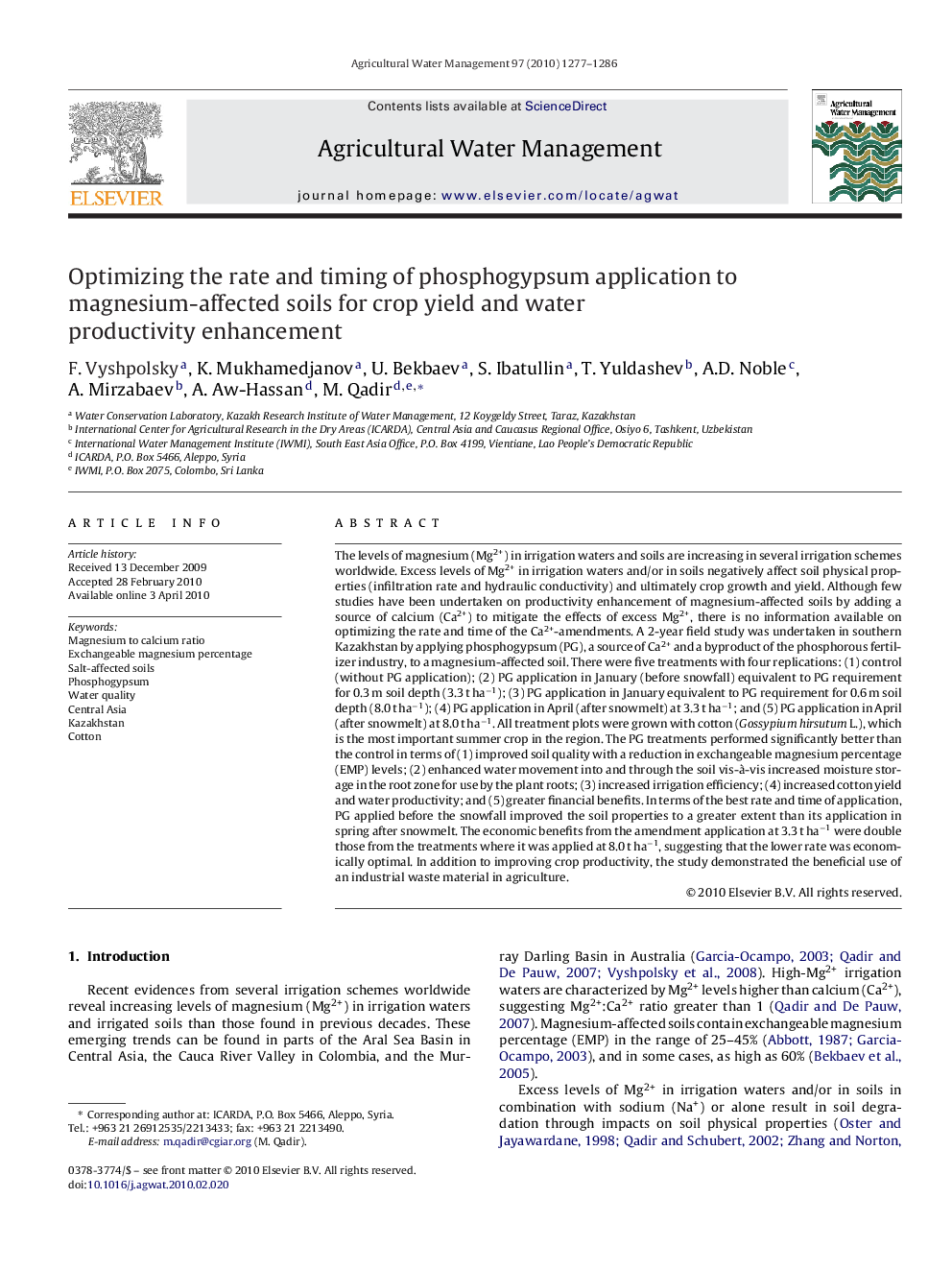| کد مقاله | کد نشریه | سال انتشار | مقاله انگلیسی | نسخه تمام متن |
|---|---|---|---|---|
| 4479780 | 1316458 | 2010 | 10 صفحه PDF | دانلود رایگان |

The levels of magnesium (Mg2+) in irrigation waters and soils are increasing in several irrigation schemes worldwide. Excess levels of Mg2+ in irrigation waters and/or in soils negatively affect soil physical properties (infiltration rate and hydraulic conductivity) and ultimately crop growth and yield. Although few studies have been undertaken on productivity enhancement of magnesium-affected soils by adding a source of calcium (Ca2+) to mitigate the effects of excess Mg2+, there is no information available on optimizing the rate and time of the Ca2+-amendments. A 2-year field study was undertaken in southern Kazakhstan by applying phosphogypsum (PG), a source of Ca2+ and a byproduct of the phosphorous fertilizer industry, to a magnesium-affected soil. There were five treatments with four replications: (1) control (without PG application); (2) PG application in January (before snowfall) equivalent to PG requirement for 0.3 m soil depth (3.3 t ha−1); (3) PG application in January equivalent to PG requirement for 0.6 m soil depth (8.0 t ha−1); (4) PG application in April (after snowmelt) at 3.3 t ha−1; and (5) PG application in April (after snowmelt) at 8.0 t ha−1. All treatment plots were grown with cotton (Gossypium hirsutum L.), which is the most important summer crop in the region. The PG treatments performed significantly better than the control in terms of (1) improved soil quality with a reduction in exchangeable magnesium percentage (EMP) levels; (2) enhanced water movement into and through the soil vis-à-vis increased moisture storage in the root zone for use by the plant roots; (3) increased irrigation efficiency; (4) increased cotton yield and water productivity; and (5) greater financial benefits. In terms of the best rate and time of application, PG applied before the snowfall improved the soil properties to a greater extent than its application in spring after snowmelt. The economic benefits from the amendment application at 3.3 t ha−1 were double those from the treatments where it was applied at 8.0 t ha−1, suggesting that the lower rate was economically optimal. In addition to improving crop productivity, the study demonstrated the beneficial use of an industrial waste material in agriculture.
Journal: Agricultural Water Management - Volume 97, Issue 9, September 2010, Pages 1277–1286